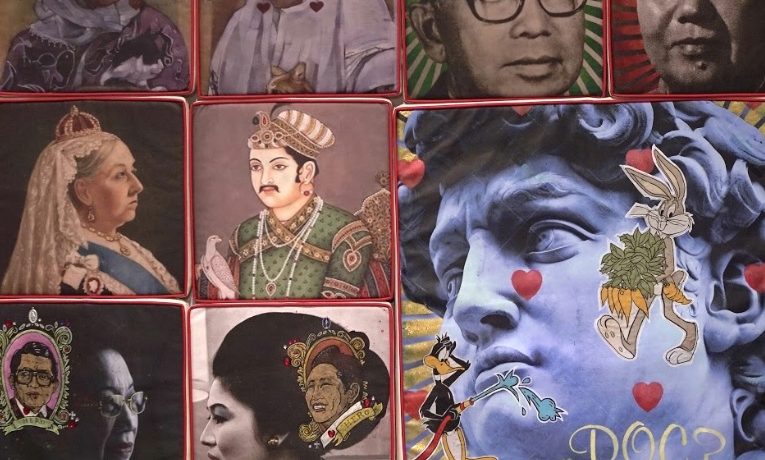Ivan Lam’s One Inch is an installation of 19 televisions with their screens facing in, an inch away from a dark wall. This creates 19 rectangular light frames coupled with sounds from Malaysian films from the 1950s to today.
[Read: Get to know the history of Penang’s art societies]
There have been differing opinions about the group exhibition at the Malaysian Pavilion. Marianna De Marzi, a curator from Italy said that the pavilion showcased a “coherent and balanced choice of works and artists fitting the concept” but that the artworks were packed in too tight in the space. Perhaps in wanting to be representative of the diverse narratives in Malaysia, the number of works may have felt overwhelming to certain viewers.
Lea Rozencwajg, Senior Communications Officer with King’s College London, would not have thought that the pavilion is Malaysian if not for the signage and found it difficult to understand the relationship or dialogue between the pieces. This disconnection may be an unconscious representation of the Malaysian lifestyle. Living in peace and comfort as we strive to become a globalised nation, we become a little more detached from one another than we hope to be.
In our interviews with Ivan and Lim, we aim to look closer at both of their works individually and in relation to some of the other Malaysian pieces.
Ivan mentions that One Inch dialogues best with Anurendra’s Yesterday in a Padded Room because “it is the complete opposite” of his work. Anurendra’s room is lively, inviting, and possibly more interactive than Ivan’s room which is dark and filled with white noise, prompting more reflection and deep thought.
At first, the white noise might make it difficult to focus but eventually, it leads the audience to ponder upon the sounds they are surrounded with. With a one-inch distance between television screens and black wall, the artist aims to draw attention to the need to step back, be open-minded, and to be objective with our views in life.
Similarly, Lim’s Timeframes, featuring his signature chair motif invites audiences to ‘rest’ as they ponder upon his works. He wanted to pay homage to the chair which he finds is always there in his life supporting him silently. Offering the same to his audiences, he gives them chairs to sit in comfort and observe the exhibition.

